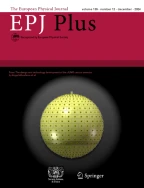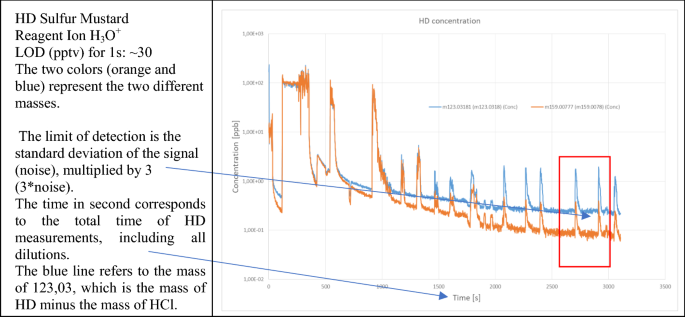
NATO doctrine considers clearance decontamination to be applicable after the termination of a CBRN incident and largely deems the conduct of clearance decontamination to be a civilian, not a military, capability (NATO Standard NATO STANREC 4784 CBRN Clearance Decontamination, Study Draft 1, November 2015). Clearance decontamination procedures are such that the process is verified as being achieved by determining the residual contamination levels on every part of various surfaces of equipment and infrastructure, and by demonstrating that such levels are below the ones that are pre-determined by the relevant civilian authorities, who are responsible for the safety of the civilian population (NATO Standard NATO STANREC 4784 CBRN Clearance Decontamination, Study Draft 1, November 2015). The current desirable surface contamination detection levels for some Chemical Warfare Agents are technically challenging and may be beyond the capabilities of current technologies of military and civilian authorities. Can those low levels be detected, in real time, with existing technologies? Proton Transfer Reaction–Time of Flight–Mass Spectrometry (PTR–ToF–MS) enables simultaneous real-time detection, monitoring, and quantification of volatile organic compounds. Trials and evaluations with this PTR–ToF–MS technology, using Chemical Warfare Agents as contaminants, will show that this technology is an invaluable asset in supporting civilian authorities when determining safe levels of surface contamination in real time, after the completion of decontamination operations.
Avoid common mistakes on your manuscript.
This paper focuses on the remediation phase of a CBRNe incident, which includes decontamination measures. This last phase of an incident is—in my view—a “stepchild” of the CBRNe industry, as it includes very long and technically challenging processes, such as the process of declaring an incident site safe. An incident site could be deemed “clean” when it “is no longer a hazard for the user”. However, this definition is not accurate, because the expression “hazard for the user” is on a sliding scale. This paper shall investigate what is considered as being safe.
The problems and the very time-consuming operations to render a site safe became very obvious—and also known to the general public—during the cleaning operations after the recent (2018) incidents in the UK, which involved a deadly substance—namely Novichok—a nerve agent belonging to the group of Chemical Warfare Agents (CWA).
The decontamination (or cleaning) of an affected site involves a process of testing, removal of items and materials that may have been contaminated, but also chemical cleaning and retesting. Testing and retesting are very time-consuming operations, as they involve the analysis of the samples taken, which is usually performed in (accredited) chemical laboratories. Can this process be shortened? This is another question that this paper tries to answer.
The conceptual approach of this paper is based upon a question that I have been faced with many times, in operational settings as well as in training environments: How can safe levels of surface contamination be established in a fast, real-time, and analytically recognized manner? In 2017, when I started working with the Proton Transfer Reaction Time of Flight Mass Spectrometry (PTR–ToF–MS) technology, I realized that instruments based upon this technology could finally allow the relevant actors to overcome the existing limitations and make them able to determine safe, residual contamination levels in a fast and reliable manner. I have engaged in a technical cooperation with an Austrian company, IONICON Analytik GmbH, that has developed that technology for industrial applications.
In August 2018, for the first time ever with that technology, we carried out field trials with Chemical Warfare Agents in a specialized laboratory in the Czech Republic. Such trials aimed at clarifying whether clearance decontamination could be supported by PTR–ToF–MS technology.
Chemical Warfare Agents—often referred to as Chemical Weapons—are chemicals used to cause intentional death or harm through their toxic properties; as such, they are defined in the Chemical Weapons Convention [1].
CW agents used in warfare are classified as follows [2]:
It is important to note that NATO AEP-58 [3] recommends decontamination testing to be performed with two main types of CWAs: nerve and blister agents.
Therefore, this paper (and its laboratory trials) focuses on those two categories of Chemical Weapons.
The question to be answered is: Are there are any residual contamination levels after a completed cycle with current decontamination technologies and procedures? This level of thorough decontamination should partially or totally remove all levels of contamination. But what are the amounts that the “residual contamination levels” expression refers to? The results of some thorough decontamination field trials, carried out in 2009 and in 2014, will shed light on this point.
The trials were carried out at a specialized facility that allows the outdoor use of Chemical Warfare Agents, using decontamination equipment that had been tested against current NATO standards (AEP-58). The product names of various decontamination solutions are not mentioned, and the test protocols (set up of the tests) are not explained in detail in this paper.
Two field tests were carried out by the author of this paper with one military unit in 2014 and with an international arms control organization (Organisation for the Prohibition of Chemical Weapons) in 2009.
The samples were contaminated with Chemical Warfare Agents; more specifically, they were calculated by the equivalent of 10 g/m 2 . The surface areas of the contaminated painted metal plates were 5 cm by 5 cm, for a total of 25 cm 2 .
Totally, 8 out of 24 samples showed no residual contamination (below LOD, Limit of Detection), according to the analytical laboratory results of the samples taken (wipe samples).
It can be concluded that two-thirds of the decontaminated surfaces were still contaminated with small amounts of Chemical Warfare Agents. Some of those residual amounts can be considered as traces, as decontamination efficiency was in the range of 90–100%. Traces (or trace elements) of CWA are defined in a certain percentage of volume or weight, usually ranging from 0.1 to 0.01% [4], or as any element having an average concentration of less than about 100 parts per million atoms or less than 100 μg/g [5].
The wipe samples were analysed with GC–MS technology.
STANREC 4578 lists the essential and desirable surface contamination detection levels for some Chemical Warfare Agents. What are such desirable detection levels? They are defined as levels of detection—after completed decontamination—that will prevent exposure of individuals to have noticeable health effects; it is expected that detection equipment will detect contamination down to the levels shown in Table 1.


The results are summarized in the table below.
It has to be noted that the concentration values below refer to the volume of the funnel (30 cm 3 ), measured at a distance of 10 cm from the surface of the petri dish.
The results are summarized in the table below.
The LoD on surface areas has been identified through our field trials. The results are described hereunder.
NATO defines its essential and desirable levels of residual and safe surface contamination as follows:
The results of the field trials have shown that the detection and identification levels of the PTR–ToF–MS technology lie well within these desirable NATO limits, apart from VX and L, for which the instrument meets the essential limit.
The values in the table below represent the area where the noise (background) signal could still be clearly distinguished from the background. At the subsequent step of dilution, this was no longer possible.
The values in the table below represent the area where the obtained signal could still be distinguished from the background (noise). At the subsequent step of dilution, this was no longer possible.
Multiple decontamination cycles might be required to render contaminated surfaces safe to a level that they do not pose any threat to humans anymore, which means that such levels do not cause any noticeable health effect. How do the relevant authorities perform checks on potentially high residual contamination levels? For the moment being, this process is time-consuming and involves elaborate analytical procedures and laboratories. The IONICON PTR–ToF–MS technology can be used on site and can produce real-time—immediate—results. It does not require taking any samples, is easy to use, and analytically reliable. Field trials have clearly shown that NATO essential and desirable detection levels can be reached. In my view, the Proton Transfer Reaction–Time of Flight–Mass Spectrometry trace detection technology is an invaluable asset supporting civilian authorities in determining safe levels of surface contamination in real time, during decontamination cycles, and after the completion of decontamination operations.
This manuscript has associated data in a data repository. [Authors’ comment: The raw data were generated at a specialized facility, allowing access to chemical warfare agents. The derived data supporting the findings of this article are available from the corresponding author on request].
Open access funding provided by Università degli Studi di Roma Tor Vergata within the CRUI-CARE Agreement. This research was not publicly funded.